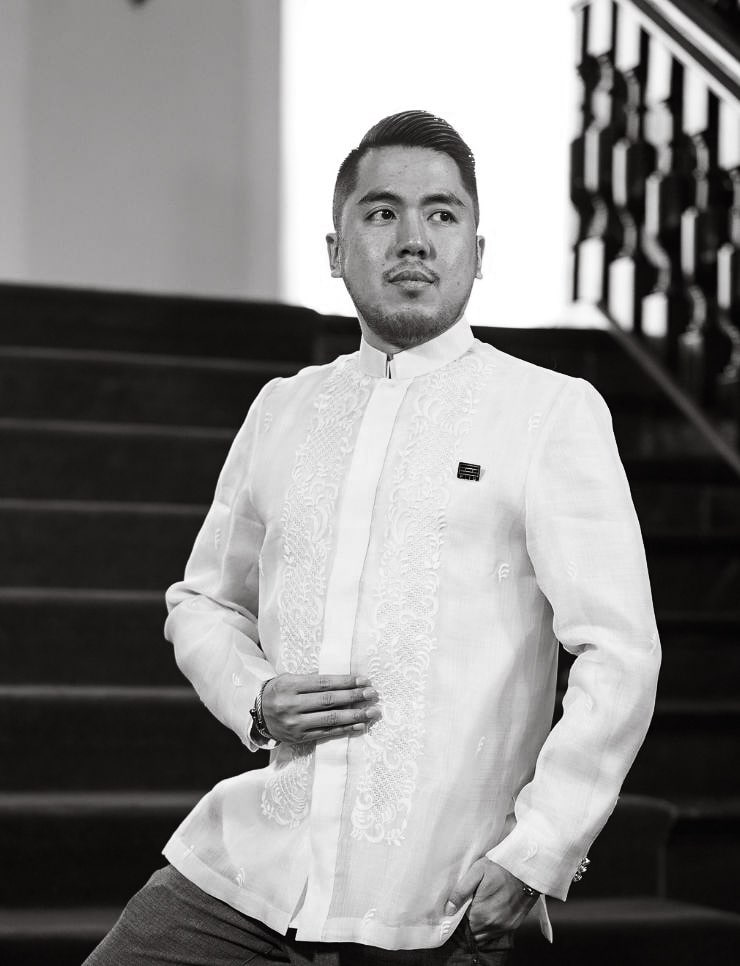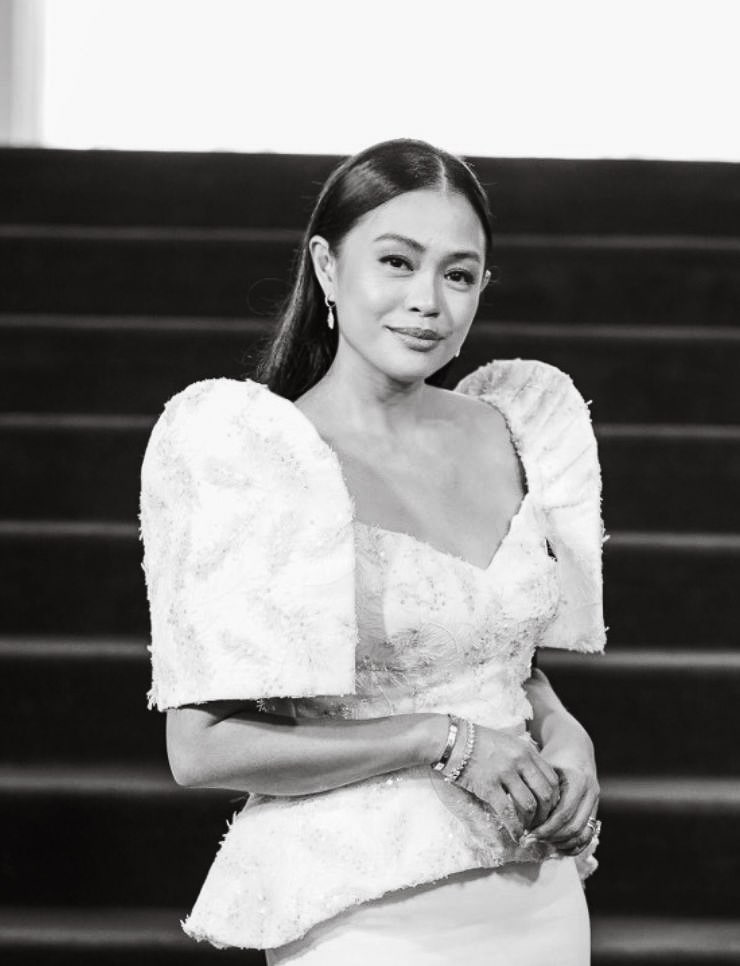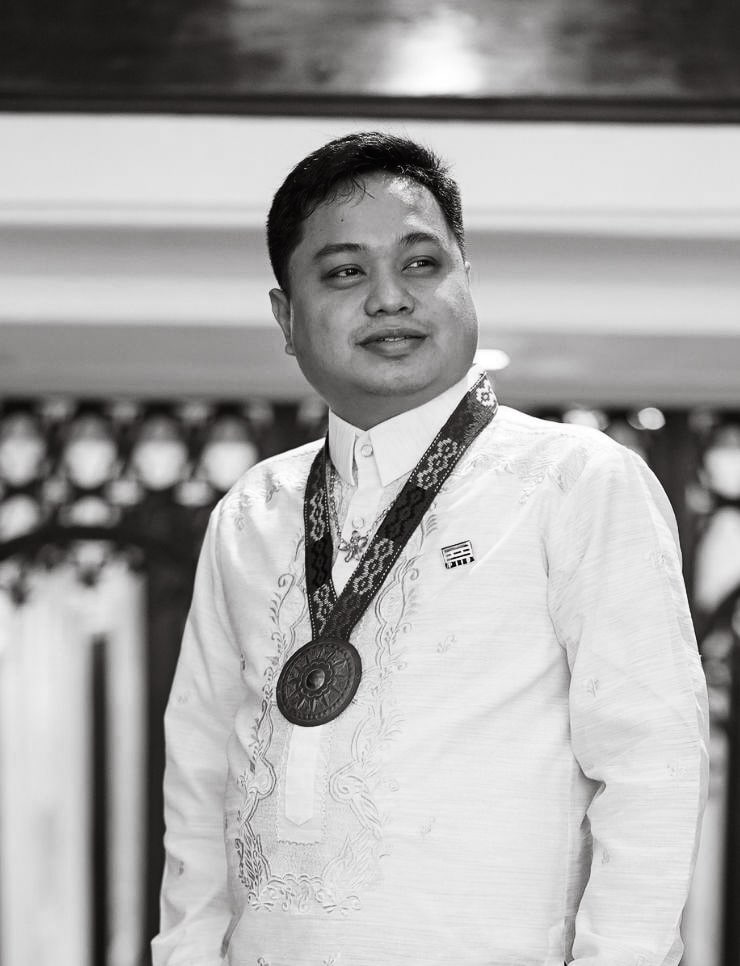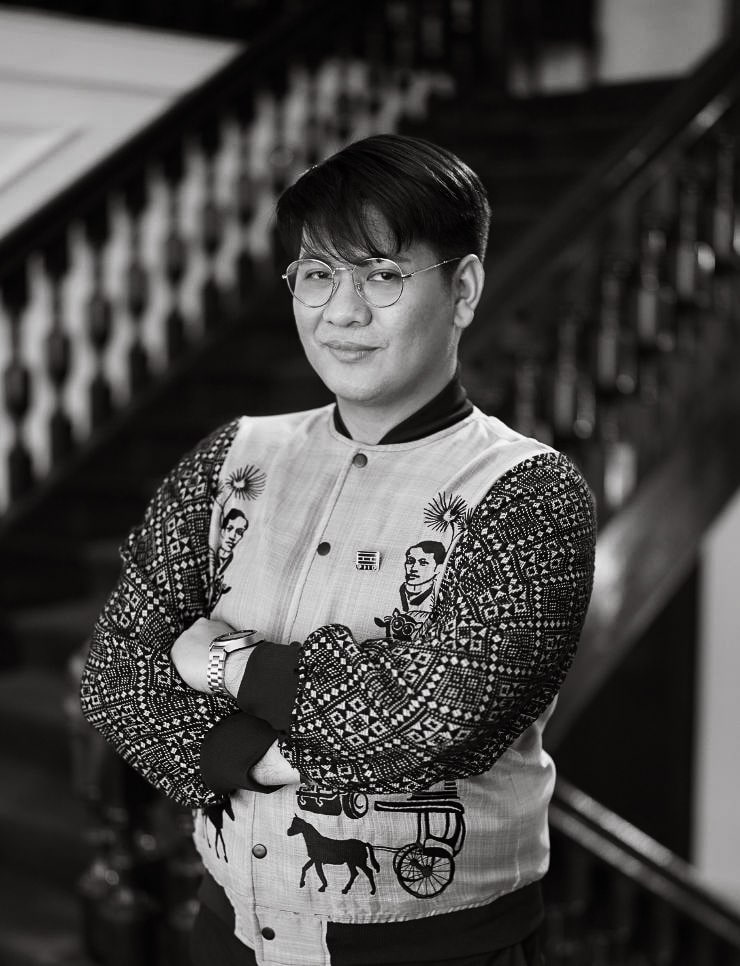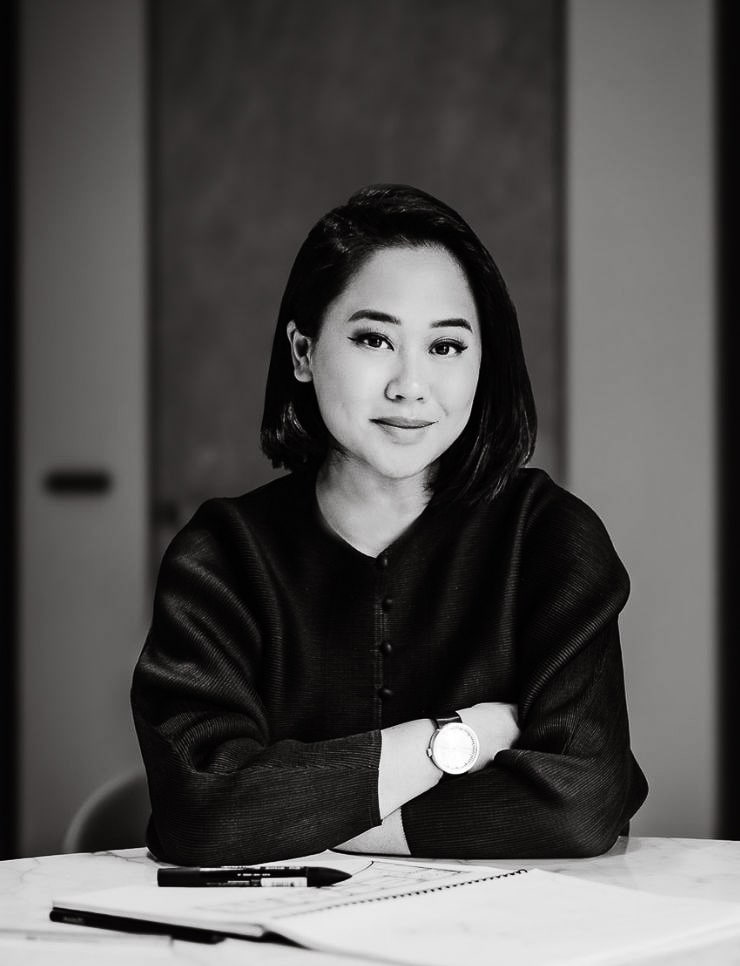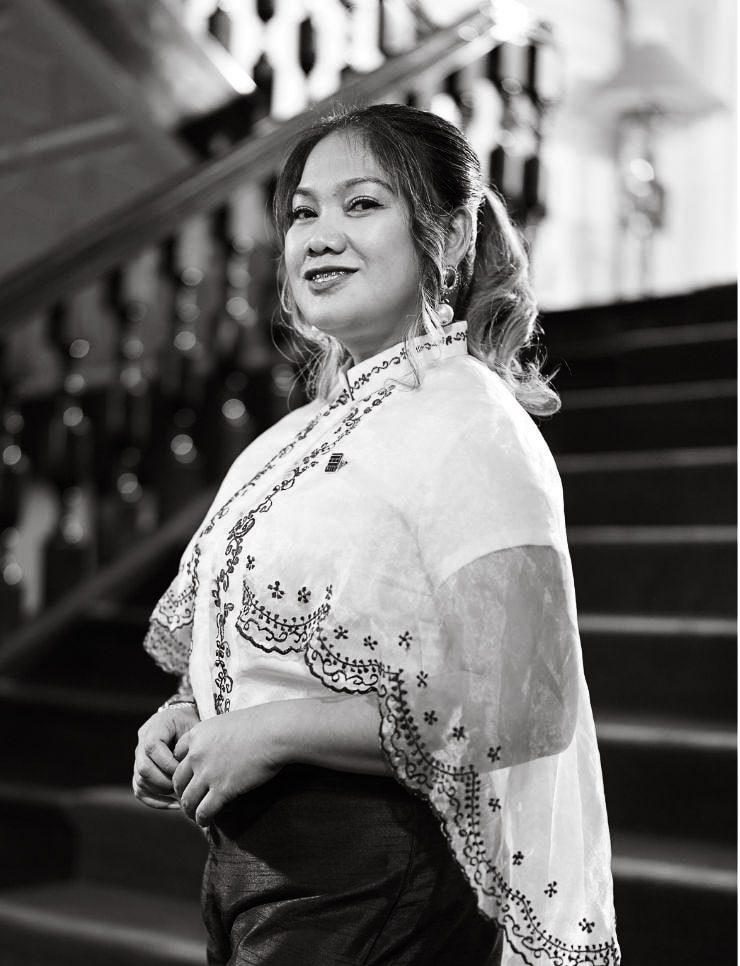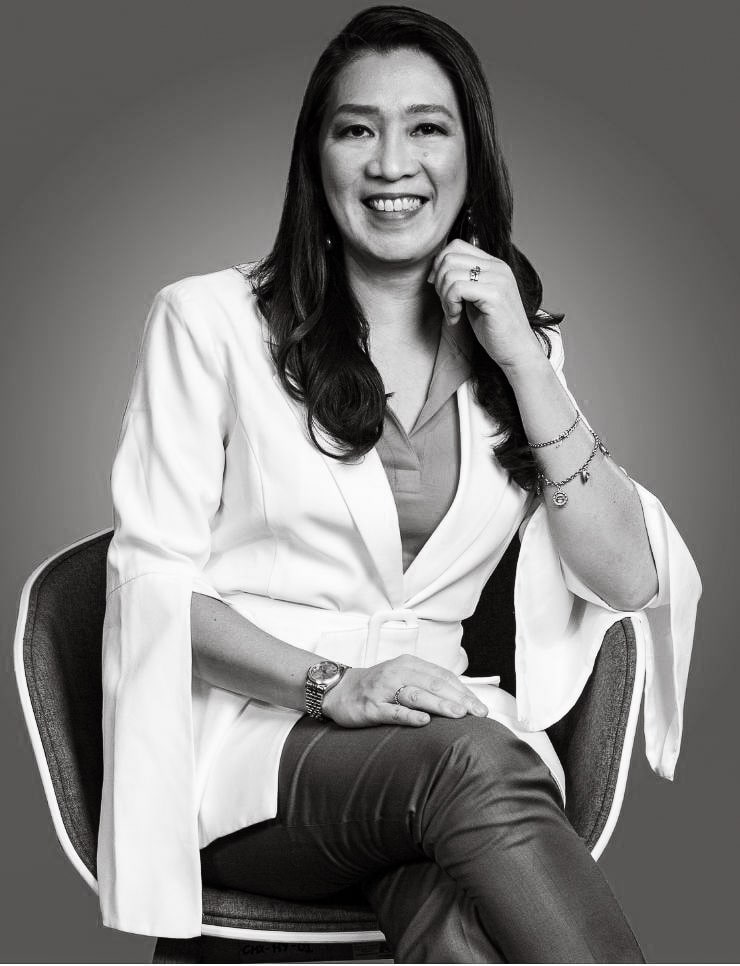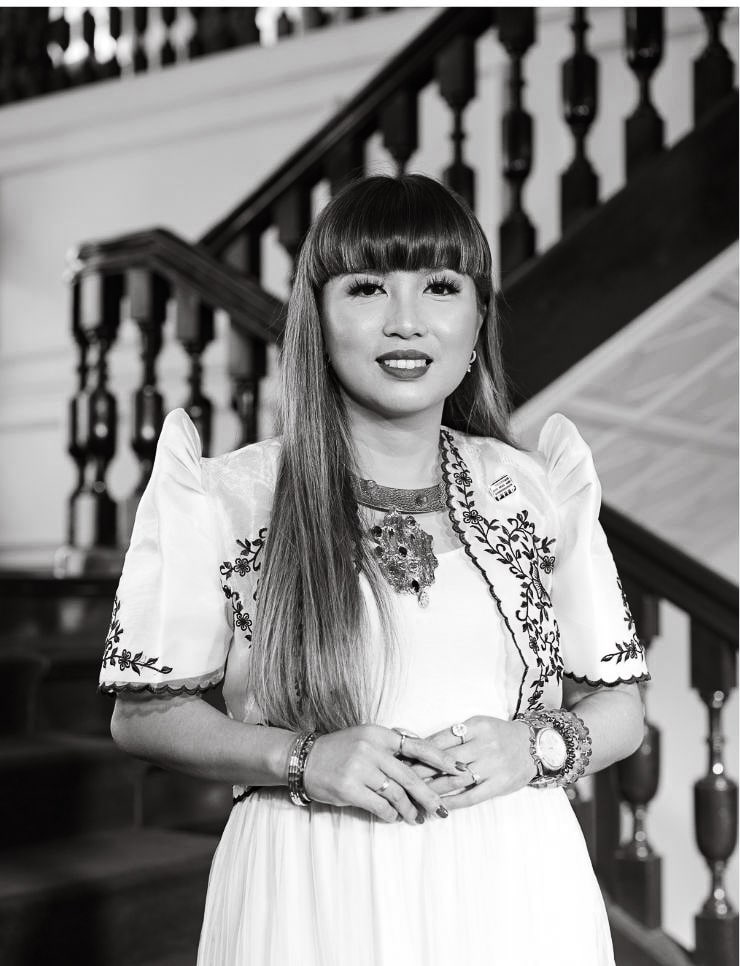In 1971, despite the constant turmoil of student activism and political violence (such s the August 21 Plaza Miranda bombing), a venue for industrial design was available via the Bold Look Collection of the House of Puyat, held at The Plaza’s Presidential Hall, featuring the designs of Mel Gana, Evelyn Vales Garcia, Johnny Hubilla, Edith Oliveros, and Duane Quintal (Olivares 1998, 16). With the advent of the New Society under President Ferdinand Marcos in 1973, the initiative of interior design fell to the government, which under First Lady Imelda Romualdez Marcos reorganized the cultural sphere via state-sponsored institutions like the Design Center of the Philippines (DCP), and the Cultural Center of the Philippines (CCP).
The need to accommodate thousands of foreign dignitaries attending the 1976 International Monetary Fund-World Bank (IMF-WB) conference in Manila through the construction and decoration of 22 major new international hotels was the primary impetus for interior designers to showcase their contributions.
The Seventies was thus characterized by individual PIID members undertaking interior design projects primarily for tourism-related structures like hotels, airports, and resorts. Besides tourism facilities, another area was designing new interiors for houses of the middle-upper class of the period, primarily with the expansion of gated subdivisions in Makati, Quezon City,Mandaluyong, Pasig, and Muntinlupa.
The 1970s was initially characterized with hard-edged forms and bright colors associated with industrial design and High Modernism, which would be juxtaposed with Pop Art elements. In the late-1970s, the use of softer, organic forms, the reemergence of Neo-Vernacularism, the Ilustrado Style, and the dominance of Tropical Modernism (particularly the introduction of rattan furniture in interiors) would typify Filipino Interior Design. Along with Edith Oliveros, Mel Gana, Sonia Santiago Olivares, Wili Fernandez, Johnny Hubilla, and Gerry Contreras, new PIID members like Duane Quintal, Boots Soler, Angelita Bondoc, Ramon Antonio, Luis Antonio, Josephine “Opat” Hermano, and Manny Castro emerged as prominent interior designers during the Seventies to early Eighties (Travel Time 2001a; Oliveros and Florendo 2014, 130). PIID Presidents during the Seventies were Edith Oliveros (1971-1972); Evelyn Vales Garcia (1972-1975); Sonia Santiago Olivares (1975-1976); Nena Ocampo Villanueva (1976-1978); and Johnny Hubilla (1978-1980).
In the field of interior design education, Leticia Sablan Limpo initiated the improvement of the Interior Design curriculum at the College of the Holy Spirit between 1970-1975 were she introduced the thesis requirement of a book research, together with an actual graduation exhibit for the interior design students of the College of the Holy Spirit, a hand-on experience in putting up actual interiors settings as designed. On the other hand, a Bachelor of Interior Design course was instituted at the College of Home Economics (CHE), University of the Philippines (UP) Diliman in 1973 as a joint program between College of Home Economics and the College of Architecture (CA). In the 1980s, capital flight and political uncertainty following the 1983 Ninoy Aquino assassination would force homeowners to build smaller homes, like the townhouse and multi- level apartment/condominium unit.
Postmodernism and futurist dystopias were the new dominant styles, with the return of classical motifs on modern spaces using synthetic materials; or the use of high technological designs inspired by films like Star Wars, Terminator, or Blade 8 Runner. Nonetheless, it was also in the early-1980s that the impetus towards fulfilling the professionalization efforts of the mid-1960s was anchored on firmer ground, following the formation of the Specialty Board of Interior Design (BoID), under the Board of Architecture of the Professional Regulation Commission (PRC) in 1982, and whose first members were Julio Matias, Lor Calma, and Belen Sablan Morey. The administering of the first licensure examinations for Interior Design followed in October 1983. Thirteen examiners took this first exam, of which eleven passed. Among the passers-and thus the first locally licensed interior design practitioners in the Philippines-were Ma. Lourdes Abad, , Ma. Theresa Battad, Sherby Co, Maria Nerissa Galang, Ma. Fleur delys Granda-Sison, Evangeline Belinda Kuizon, Ma. Consuelo Laya, Maria Encarnacion “Marichi” Limpo-Costelo, Ma. Antoinette Relleve, Ma. Janet Ocampo, and Ma. Elena Yñiguez (Nubla December 19, 1983). In February 1984, following the passage of Resolution No. 2 of the Specialty BoID, 57 other interior design graduates were sworn in as licensed interior designers.
Thereupon, the board examinations for interior design was held every October, yielding a harvest of roughly fifty to seventy board passers every year from 1984-2000; and from 2001 onward, between 110-240 passers per year. A growing concern for the professional society to put its position existence in place and to assert its rights in the industry It was also at this time that the members of the IDAP were integrated into the PIID, forming a single organization in order to have a strong voice and establish its goals and standards of practice; whose membership spanned from new interior design graduates to senior professionals; and which can now work together to enforce tighter guidelines of professional practice, and begin working for the full independence of Interior Design from Architecture. The Modernist logo of the expanded PIID would also be designed at this time by co-founder Lor Calma.
With the Specialty Board for Interior Design created by the PRC through the Board Resolution of the Board of Architecture, a need to standardize the interior design curriculum among schools and institutions offering the interior design program was established by 1979. The Council of Interior Design Educators (CIDE) was initiated and formed by Belen Sablan Morey and is composed of the following member-schools: UST, College of the Holy Spirit, PWU, Assumption College, UP, PSID, La Consolacion College - Bacolod, University of St. Louis Tuguegarao, UE Caloocan and St. Scholastica’s College. CIDE was formed to unite and implement guidelines for the preparation of Board Exam questions via the standard curriculum. In particular, CIDE decides how to come up with scope of subjects in its teaching procedures and other requirements. To date CIDE has legitimized its existence with the efforts of the organization’s officers to register with the SEC in order to comply with proper documentation.
Despite the uncertainty of this decade, exhibitions featuring Filipino interior designs still occurred. From February 7-29, 1983, the PIID presented and sponsored its 9th interior design show called “Buhay Pilipino” at the 9th Floor of the then-new Allied Bank Building along Ayala Avenue corner Makati Avenue. The show highlighted the traditions, customs and varied influences (foreign, indigenous and ethnic) that shaped the Filipino lifestyle at the time. The PIID exhibitors included: Nardy Aquino, Evelyn Suarez, Sonia Ongkiko, Edith Oliveros, Tony Adriano, Gerry Contreras, Andre Soriano, Roland Laurena, Ronnie De Jesus, Yolinda Pe, Raymond Fuentes, Budji Layug, Ramon Antonio, Luis Antonio, Manny Castro, Belen Sablan Morey, Sonia Santiago Olivares, Ched Berenguer Topacio , Wilfrid Nicholo Magcase, Josephine Labrador Hermano, Tirso Umale, Jiro Estaniel, Myrna Guiang Limcaco, Edong Lazatin, Willi Buhay, Joselito Querubin, Johnny Hubilla and Jacqueline Vega. The lobby of the building was converted by Lor Calma and other PIID members into a “rain forest”-themed Buhay Filipino 10 1 interior (Interview with Lor Calma, 16 June 2014). From 1985 to 1987, the PIID coordinated with the state-run Center for International Trade and Exhibitions (CITEM) under then-Director Mina Gabor to promote interior design within the Philippines, as well as abroad.
CITEM provided financial support to bring exhibit materials, furniture, accessories to the different Asian countries to showcase Philippine products and design expertise of the Filipino Interior Designers, through an actual exhibition showcase. Through this support, design exhibitors were able to travel to other countries in Asia to showcase Philippine Design. This program between PIID and CITEM resulted in a travelling show from June-July 1985 titled “Accents on Philippine Interior Design.” The show went to the United Arab Emirates, Brunei Darussalam, Kuala Lumpur Malaysia, Hong Kong, Singapore and Bangkok Thailand. The featured members of the travel group were Ched Berenguer Topacio, Josephine Hermano, Edgar Ramirez, Edith Oliveros, Tony Adriano, Belen Morey, Evelyn Garcia. (PIID Secretariat. Email to author 25 July 2014). This was on top of the annual Furniture Market Week inaugurated by CITEM in 1985 that featured PIID designer furniture for local consumption (Olivares 1998, 23). In addition,the holding of the ASEAN Summit in Manila in December 1987 after the restoration of democracy by President Corazon Aquino provided ample opportunities for PIID members to decorate the suites and conference facilities of the foreign delegations (Herico 1987,). It was also in December 1987 that the first newsletter of the PIID, Mozaic, was published under President Raymond Fuentes, and had Gemma Aldea as its founding Editor in Chief. In the international awards circuit, Ched Berenguer-Topacio gave distinction to Philippine interior design practice from the late-1980s to the early 1990s for her winning using outstanding furniture designs. Among these were the 1987 Roscoe Award for her Petal Collection Furniture Design; the 1988 Roscoe Award for her Matador Chair; and the 1992 Neocon Award for her Orient Klismos Chair.
New emerging interior designers of the 1980s included Tony Adriano, Roland Laurena, Antonio “Budji” Layug, Jiro Estaniel, Nardy Aquino, Alexander “Ogie” Periquet, and EdongLazatin (Travel Time 2001a; Oliveros and Florendo 2014, 147); Co August 13, 2014). The PIID Presidents during the 1980s were Lor Calma (1980-1981), Gerry Contreras (1981-1983), Evelyn Suarez (1983-1984), Jiro Estaniel (1984-1985), Nardy Aquino (1985-1986), and Raymond Fuentes (1987-1990).
Starting in 1987, efforts were underway to legislate improvements to the professionalization of interior design practice and its regulation. Leticia Sablan Limpo, together with Belen Sablan Morey, and Gerry Contreras initiated to draft an interior design bill filed in Congress and Senate and faithfully followed up in Congress for the next 12 years. The efforts at legislation began with a Senate Bill sponsored by Senator Teofisto Guingona in 1990. This would eventually result in Republic Act 8534, signed by President Fidel Valdez Ramos in February 23, 1998, in the presence of Speaker Jose de Venecia, PIID President Gerry Contreras, and members of the PIID Board at Malacañang Palace. RA 8534 defines Interior Design for the first time as an autonomous and regulated discipline separate from Architecture, and invests the BoID with its own regulatory entity separate from the Board of Architecture. Licensure examination requirements were tightened, and unlicensed interior design practitioners were penalized under this new law. Foreign practitioners were also required to get temporary work permits before being allowed to practice locally.
In this period, the conditions of interior design practice had started to normalize and accelerate following the normalization of the economy after the coup attempts, natural disasters, and power crisis of 1989-1992. The PIID, through the efforts of its senior members, specifically Edith Oliveros and Belen Morey became accredited to the international interior design organizations, namely the Asia Pacific Space Designers Alliance (APSDA) in October 1991 at its national convention in Taiwan. This further enhanced the PIID’s presence in the region; and in October 1995 the PIID was accepted as a member in the professional category of the International Federation of Interior Architects/Designers (IFI) at its international convention held in Nagoya, Japan. These recognitions were indeed a moral upliftment for professional interior designers in the Philippines, and in order to further prove its worth, the PIID became the Accredited Professional Organization (APO)-now Accredited Integrated Professional Organization or AIPO)-by the PRC. The PIID is recognized by the PRC as the only Accredited Professional Organization (APO-now AIPO) for Interior Designers, which mandated that all successful passers of the board examinations be automatically members of the PIID. Along with the interior design courses of UP, UST, CHS, PSID and Assumption College, schools that opened new interior design courses include St. Scholastica’s College, University of San Carlos Cebu, La Consolacion College Bacolod, University of the East Caloocan, Philippine Women’s University Manila, and the College of Saint Benilde Manila via a feeder program from PSID (Travel Time 2001a).
Starting in 1993, the PRC, as a means of acknowledging the contributions of professional practitioners in their chosen field, launched the Outstanding Professional of the Year Awards for Interior Design. The awardees in the 1990s included: Ched Berenguer Topacio (1993), Edith Oliveros (1994), Edgardo Ramirez (1995), Wili Fernandez (1996), Lorenzo Calma (1997), Sonia Santiago Olivares (1998), Josephine Labrador Hermano (1999), and Leticia Sablan Limpo 23 (2000).
With the implementation of Republic Act 7356 creating the National Commission for Culture and the Arts (NCCA) in 1992, the Implementing Rules and Regulations (IRR) of the NCCA mandating the creation of national committees in the various arts began to be implemented in the late 1990s, although the IRR would not be encoded in definitive form until 2010 (National Commission for Culture and the Arts 2010). Among its provisions were cultural heritage preservation of Filipino structures and their interiors; and the implementation of grants and awards via the various committees. Interior Design, resides in the Subcommission of the Arts, National Committee on Architecture and Allied Arts, which includes the fields of architecture, landscape architecture, interior design, industrial design, and fashion.
With the economic expansion of the countryside in the 1990s, from Calabarzon in southern Luzon, to Metro Cebu and other areas, interior design practice expanded dramatically outside Manila. The explosion of new electronic equipment inside the home necessitated new design solutions, as well as the dramatic range of design materials that was now possible with globalization, such as imported marble, tiles, and furniture. Traditional and contemporary Asian designs fused with international accents once more became the predominant theme (Olivares 1998, 27), followed by more modern versions of the Neo-Vernacular style; and the arrival by the late-1990s of “fantasy design” such as the Mediterranean and Neo-Modern styles. Among the top emerging interior designers of the 1990s would include Leo Almeria, Arlen de Guzman, Wilfrid and Maritess Magcase, Tina Periquet, Manny Samson, Ivy Almario, and Conrad Onglao (Travel Time 2001a; Florendo 2014). The PIID Presidents of the 1990s were Belen Sablan Morey (1991-1992), Johnny Hubilla (1993-1996), and Gerry Contreras (1996-2001). It was alsoin the late-1990s that more regular activities of the PIID membership started, primarily around the annual anniversary celebrations. This resulted in the reappearance of the PIID membership exhibitions in such venues, as the WorldBex conventions starting in 1998; as well as sponsored anniversary celebration events that started in 1998, and continued into the 2000s. Among other events that PIID would also be noted with in the 1990s was the 1998 Outstanding Store Designers Awards given by the Philippine Retailers Association, of which the following interior designers were cited for their exemplary work for their respective store clients: Miguel Pastor (for Bench-SM Megamall); Victor Ruel Pambid (for Island Spice-Festival Mall); and Maja Olivares-Co (Rustan’s Makati Expansion).
In 1998, the PIID also established a College of Fellows that distinguished its most senior and well-known members during its anniversary every September. 35 PIID members have so far been included in the PIID College of Fellows from 1998 to 2013. They are: Ched Berenguer Topacio, Lorenzo Calma, Leticia Limpo, Belen Morey, Edith Oliveros, and Edgardo Ramirez (for 1998); Josephine Hermano, Jose Ma. Hubilla, Roland Laurena, and Sonia Santiago Olivares (for 2000); Cynthia Belleza, and Gerry Contreras (for 2001); Nardy Aquino, Jiro Estaniel, and Raymond Fuentes (for 2004); Leo Almeria, Arlen de Guzman, Wilfrid Magcase, Sonia Ongkiko, and Jacqueline Vega (for 2006); Antonio Adriano, Sherby Co, Ma. Suzette Cocuaco, and Ma. Angelica Fajardo (for 2009); Luis Antonio, Ramon Antonio, Marilin Arellano, Manuel Castro, Fernando Ocampo, Evelyn Suarez, and Nena Ocampo Villanueva (for 2010); Francisco Mañosa (for 2012); and Lilia de Jesus, Raquel Florendo, and Ma. Theresa Magcase (for 2013).


